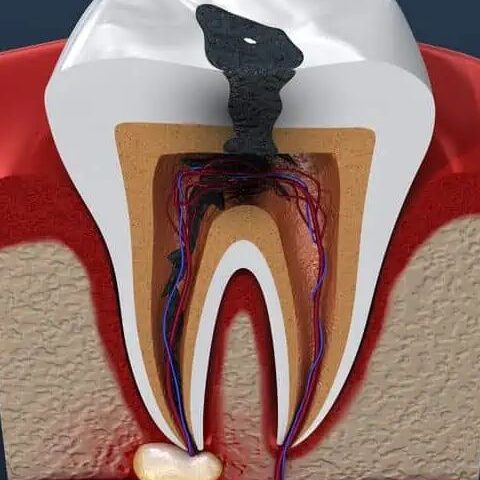
16 Best Casting Agencies in Dubai, United Arab Emirates
August 8, 2024
Are Electric Toothbrushes Better at Removing Food Particles?
August 8, 2024

Dealing with a tooth or gum abscess can be an overwhelming and painful experience, and it poses a significant health risk if not addressed promptly. These tiny infected bumps on your gums can quickly escalate into a larger, more painful problem if left untreated. If you’re wondering how to pop a gum abscess at home, this comprehensive guide will provide you with the information you need. But first, let’s explore what a gum abscess is and why it requires attention.
Understanding Gum Abscesses
A gum abscess, or dental abscess, is an accumulation of pus resulting from a bacterial infection in the mouth, which can affect the gums, teeth, or even the bone that supports the teeth. This condition indicates an active infection that needs immediate treatment, as the bacteria can spread unpredictably, potentially leading to severe health complications. According to the American Dental Association, untreated abscesses can lead to serious infections that may even become life-threatening.
How to Drain a Gum Abscess at Home
A gum boil, filled with pus, can cause intense, sharp pain that radiates from your jaw to other parts of your face, including your neck and ears. The discomfort can be unbearable, leading many to seek immediate relief by draining the abscess themselves. While it’s always best to seek professional dental care, there are some methods that can help manage the situation temporarily. Here are 11 safe and effective ways to pop a gum abscess at home:
1. Saltwater Rinse
One of the simplest and most effective remedies is a saltwater rinse. This method helps in draining the abscess, especially if done in the early stages. A saline rinse is safe and can be repeated two to three times daily to reduce bacteria in the mouth and promote healing. A study published in the Journal of Clinical Periodontology found that saltwater rinses significantly reduce oral bacteria, which can help prevent the spread of infection.
Also Read: What is The Role of Generative AI in Drug Discovery?
2. Hydrogen Peroxide Rinse
Hydrogen peroxide is a common household antiseptic that can be used to treat a gum abscess. It’s particularly effective in killing bacteria and reducing infection. To use it safely, mix equal parts of hydrogen peroxide and warm water. Rinse your mouth with this solution, but be sure not to swallow it. Hydrogen peroxide has been proven in studies to reduce plaque and gingivitis, making it a valuable tool for oral health.
3. Over-the-Counter Medications
Anti-inflammatory drugs, such as ibuprofen or acetaminophen, are often recommended to reduce swelling and inflammation associated with gum abscesses. These medications won’t treat the infection itself, but they can help manage the pain and discomfort until you can see a dentist.
4. Baking Soda and Saltwater Solution
Combining baking soda with saltwater creates a powerful antibacterial mouth rinse. This mixture not only helps eliminate bacteria but also assists in draining the abscess, thus alleviating pain. Baking soda is known for its ability to neutralize acids in the mouth, which can reduce the risk of further infection.
5. Garlic Paste
Garlic is a natural remedy with potent medicinal properties, primarily due to a compound called allicin. Applying garlic paste directly to the affected area can help combat the infection. If you can tolerate the taste, you can also chew on raw garlic. Research has shown that garlic has strong antibacterial effects, making it an effective home remedy for various infections.
6. Cold Compress
Applying a cold compress to the affected area can provide temporary relief from the pain and swelling caused by a gum abscess. This method doesn’t address the underlying infection, but it can help manage the symptoms until you can get proper treatment.
7. Essential Oils
Essential oils have been used for centuries to treat various ailments, including oral infections. Oils such as clove, thyme, and oregano have natural antibacterial properties that can help reduce the infection and pain associated with a gum abscess. Clove oil, in particular, is widely recognized for its ability to numb pain and fight bacteria.
8. Herbal Teas
Herbal teas, made from ingredients like fenugreek, turmeric, or goldenseal, can be used as natural remedies for gum abscesses. These teas contain compounds that have antibacterial and anti-inflammatory properties, which can help reduce infection and promote healing.
9. Oil Pulling
Oil pulling is an ancient practice that involves swishing oil around in your mouth to remove bacteria and improve oral health. Coconut oil is particularly effective due to its strong antibacterial properties. Regular oil pulling with coconut oil may help reduce the duration of the infection and alleviate symptoms.
10. Aloe Vera Gel
Aloe vera gel is known for its soothing and healing properties. When using it for a gum abscess, make sure you choose an edible form of aloe vera gel, not the type used for cosmetic purposes. Applying the gel directly to the affected area can help reduce inflammation and promote healing.
11. Antibiotics
Since a bacterial infection causes a gum abscess, antibiotics can be an effective treatment. However, self-medication is not recommended, as misuse of antibiotics can lead to resistance and other complications. Always consult your dentist before taking antibiotics for a gum abscess.
Conclusion
While these home remedies can provide temporary relief, it’s crucial to understand that they are not a substitute for professional dental care. A gum abscess is a serious condition that requires prompt attention from a dentist to prevent the infection from spreading and causing more severe health problems. According to the Centers for Disease Control and Prevention (CDC), untreated oral infections can lead to systemic issues, including sepsis, which can be life-threatening.
In summary, while popping a gum abscess at home might offer some immediate relief, it is essential to follow up with professional dental care to address the underlying infection properly. If you experience severe pain, fever, or swelling, seek emergency dental care immediately. Remember, your oral health is an integral part of your overall well-being.



